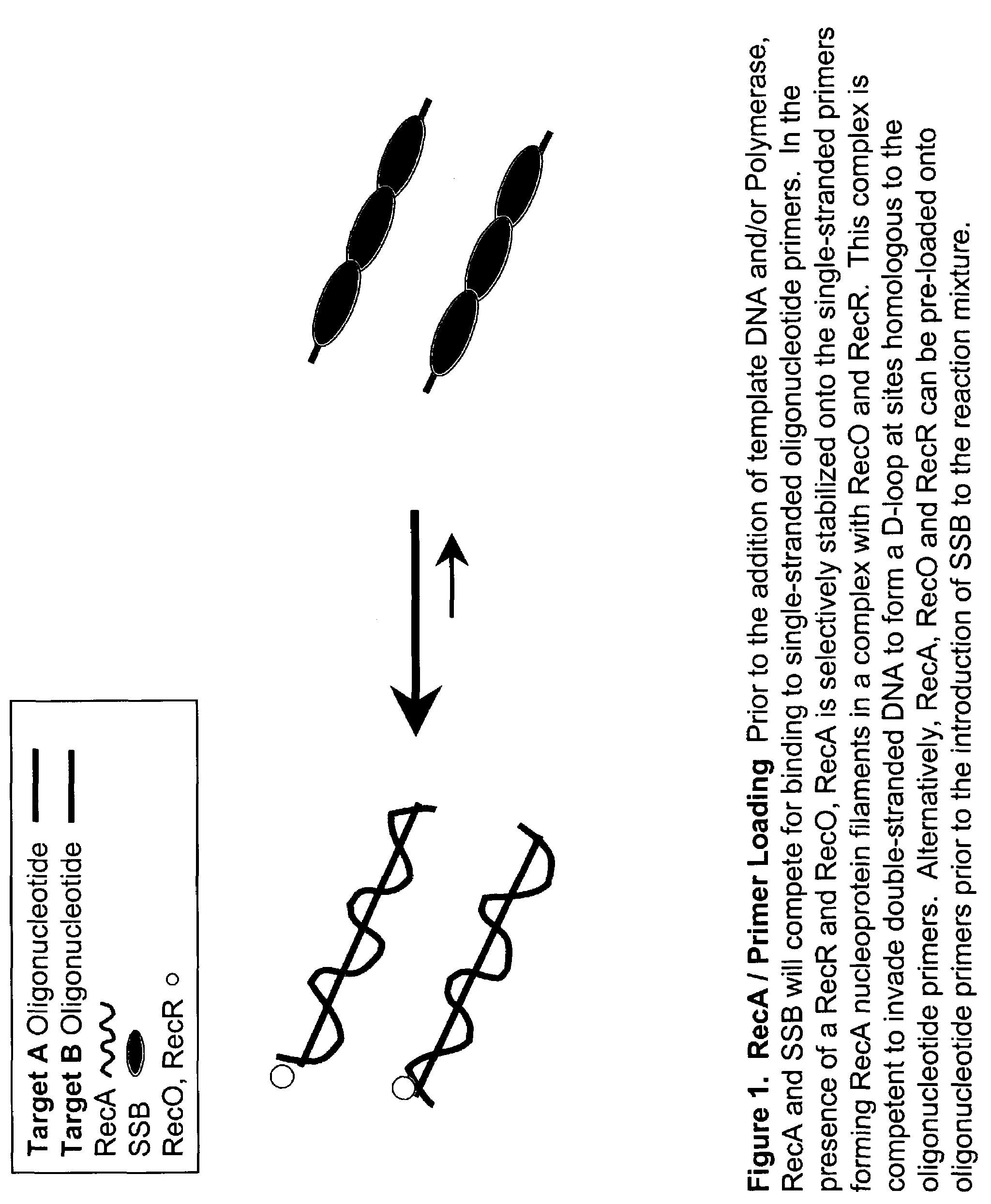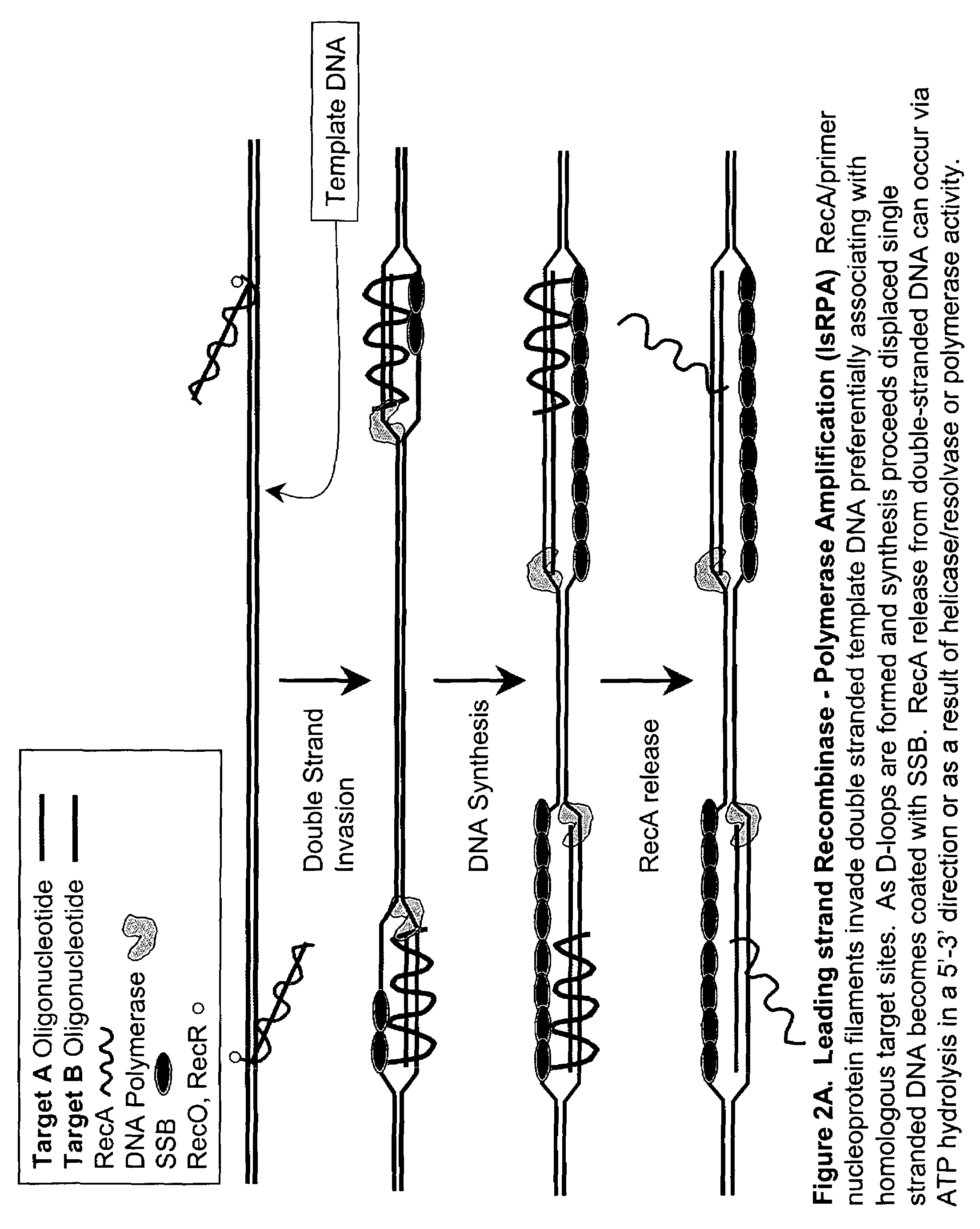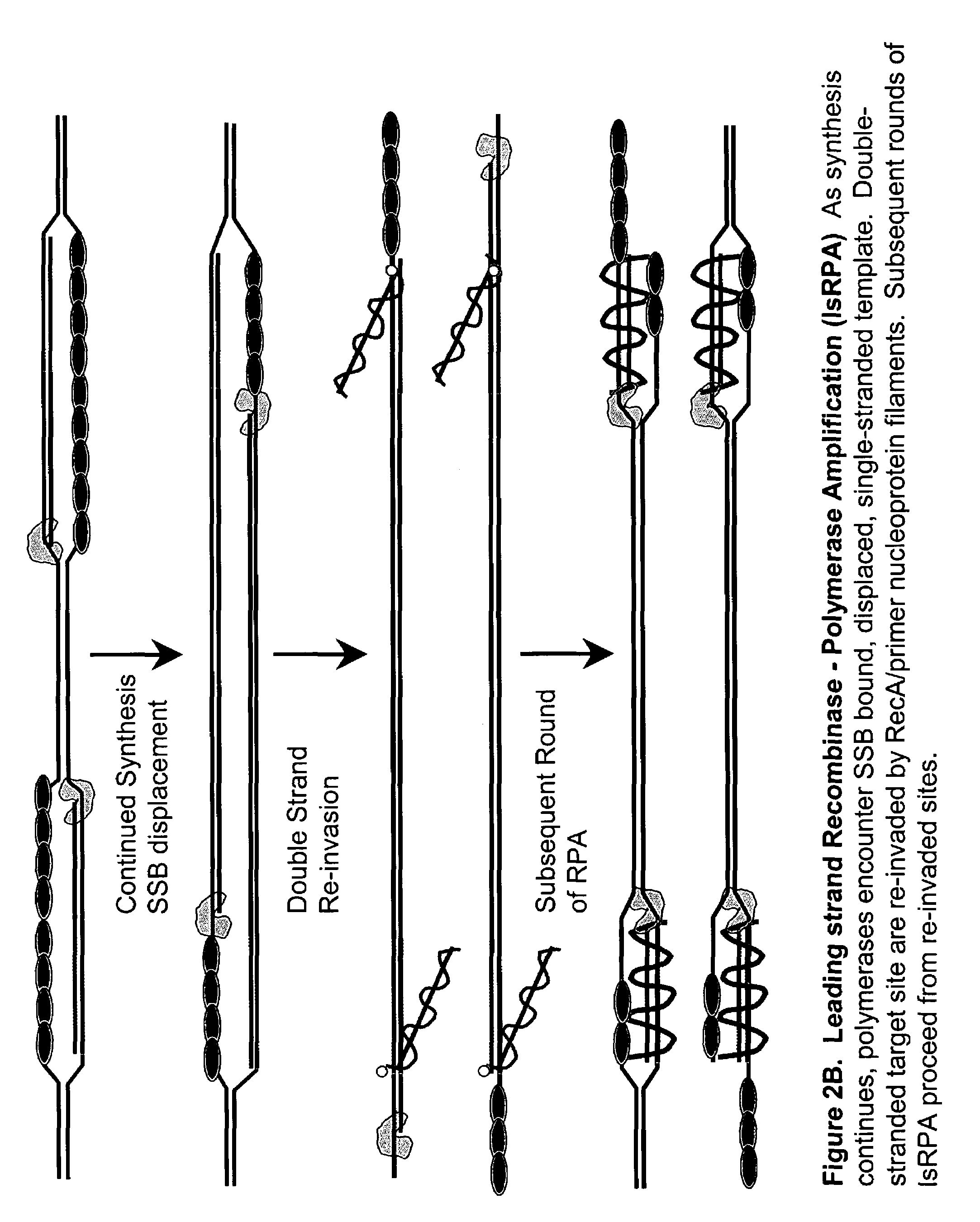Recombinase polymerase amplification
a technology of recombinase polymerase and amplification, which is applied in the field of recombinase polymerase amplification, can solve the problems of multiple approaches, limited in a number of ways, and the inability to automate the approach of adding fresh polymeras
- Summary
- Abstract
- Description
- Claims
- Application Information
AI Technical Summary
Problems solved by technology
Method used
Image
Examples
example 1
Leading Strand Recombinase-Polymerase Amplification (lsRPA)
[0172]DNA sequences can be amplified using leading strand synthesis according to the Recombinase-Polymerase amplification (RPA) method depicted in FIG. 1.
[0173]A reaction is assembled with the following composition:
[0174]
D-LOOP FORMATION / RESOLUTION COMPONENTS:ComponentConcentrationRecA20μMSingle-stranded oligonucleotide primer0.25μMATP3mMRecF0.1μMRecO0.13μMRecR0.5μMSingle-stranded Binding protein (SSB)1 to 10μMDNA polymerase V5units
[0175]
POLYMERASE / HELICASE / RESOLVASE MIX:ComponentConcentrationDNA Polymerase5unitsRuvA0.5μMRuvB0.5μMRuvC0.5μMRecG10nM
[0176]
REACTION BUFFER:ComponentConcentrationMgCl22 to 10 mMTrisHCl pH 7.210 mMDTT0 to 10 mMKCl0 to 50 mMDeoxyribonueleotide triphosphates0.2 mMBovine serum albumin (BSA)0 to 10 μg per ml
[0177]The reaction is assembled so that the final concentration satisfies the D-Loop Formation / Resolution Components, Polymerase / Helicase / Resolvase Mix, and Reaction Buffer with the DNA polymerase an...
example 2
Nested RPA
[0180]The RPA reaction is performed as described in Example 1. A fraction of one tenth ( 1 / 10) and one hundredth ( 1 / 100) of the reaction is removed and used in place of the DNA template in a second round of RPA. IsRPA, leading / lagging RPA, and combinations thereof may be used for nested RPA.
example 3
Simultaneous Leading And Lagging Strand Recombinase-Polymerase Amplification
[0181]DNA sequences can be amplified using simultaneous leading and lagging strand synthesis according to the Recombinase-Polymerase amplification (RPA) method depicted in FIG. 2.
[0182]A reaction is assembled with the following composition:
[0183]
D-LOOP FORMATION / RESOLUTION COMPONENTSComponentConcentrationRecA20μMSingle-stranded oligonucleotide primer0.25μMATP3mMRecF0.1μMRecO0.13μMRecR0.5μMSingle-stranded Binding protein (SSB)1 to 10μMDNA polymerase V5units
[0184]
HELICASE / RESOLVASE MIXComponentConcentrationRuvA0.5μMRuvB0.5μMRuvC0.5μMRecG10nM
[0185]
PRIMOSOME COMPLEXComponentConcentrationPriA 20 nMPriB 20 nMDnaT100 nMDnaB100 nMDnaC200 nMDnaG200 nM
[0186]
DNA POLYMERASE III HOLOENZYME COMPLEXComponentConcentrationβ-Clamp2μMDnaX Clamp Loader500nMPolymerase Core Complex500nM
[0187]
LAGGING STRAND MIXComponentConcentrationDNA polymerase I5 unitsDNA ligase2 units
[0188]
REACTION BUFFERComponentConcentrationMgCl22 to 10 mMTr...
PUM
| Property | Measurement | Unit |
|---|---|---|
| permissive temperature | aaaaa | aaaaa |
| permissive temperature | aaaaa | aaaaa |
| temperatures | aaaaa | aaaaa |
Abstract
Description
Claims
Application Information
 Login to View More
Login to View More - R&D
- Intellectual Property
- Life Sciences
- Materials
- Tech Scout
- Unparalleled Data Quality
- Higher Quality Content
- 60% Fewer Hallucinations
Browse by: Latest US Patents, China's latest patents, Technical Efficacy Thesaurus, Application Domain, Technology Topic, Popular Technical Reports.
© 2025 PatSnap. All rights reserved.Legal|Privacy policy|Modern Slavery Act Transparency Statement|Sitemap|About US| Contact US: help@patsnap.com



